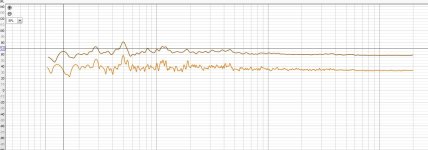Hi, I want to build myself a pair of bookshelf / desk speakers/ ( I built in the past a few, I have a woodwork shop, I've done woodworking .
I know the basics of electronics, built a few amps, design myself with the help of this community. anyway, when it comes to speaker crossovers I'm pretty noob, so I'm here for some help.)
I already have picked a pair of Dayton's TCP115-4 and ps95-8.
I'm thinking to put them in separate boxes, something like Focal did, Separate the tweeter ( fullrange in this case but with low pass ) from the woofer.
Firstly I wanted to do a 3-way , same speakers but adding a tweeter crossed at 4-5khz and use the ps95's as mid range , from 400, 800 ? to 4-5khz,.
The woofer TCP115 starts to " cone breakup ? " at around 2.5 -2.7 khz, ( yes I could go 2way with a tweeter crossed low at 1.7 or so but they are big , same size as woofer and pricey)
The full range ps95 has a weird dip at around 2.4khz.
Now what would be the thing to do with that dip at 2.4khz, bring the woofer up to compensate? or bring up that 2.4khz on the fullrange within the crossover?.
I tried some variations in XSim with the data files provided by Dayton.
Before I make up my mind to go 2way with the woofer and fullrange or 3 way with also a tweeter ( maybe the nd16fa-6, since it will be crossed high ) , I want to figure out the crossovers.
Some ideas, help , would be wonderfull.
For the 3way I was thinking woofer - tweeter - midrange, like Focal did, I also wonder that front baffle "curve" concave, what does it do, it's angle I think matters, from a first tought if u imagine a straight line fron each drive they merge into a point. but beyond that point they split up again? imagine laser beams, idk if its the same with the sound. I would go for that just for looks mainly, if it won't hurt the sound . Cabinets will be rectangular with rounded edges, instead of " semi-circle laterals" .
The cabinets, I will make them in WinISD.
For now I'm waiting for the TCP115's and ps95's to be shipped, tweeters for the "3 way ideea " not yet bought.
For crossovers while testing, I have a bunch of components and also will buy proper capacitors, as for inductors I have the posibility to measure their inductance and make them my own.
I have also attached the data files and pdf's .
Cheers, Bruno.
I know the basics of electronics, built a few amps, design myself with the help of this community. anyway, when it comes to speaker crossovers I'm pretty noob, so I'm here for some help.)
I already have picked a pair of Dayton's TCP115-4 and ps95-8.
I'm thinking to put them in separate boxes, something like Focal did, Separate the tweeter ( fullrange in this case but with low pass ) from the woofer.
Firstly I wanted to do a 3-way , same speakers but adding a tweeter crossed at 4-5khz and use the ps95's as mid range , from 400, 800 ? to 4-5khz,.
The woofer TCP115 starts to " cone breakup ? " at around 2.5 -2.7 khz, ( yes I could go 2way with a tweeter crossed low at 1.7 or so but they are big , same size as woofer and pricey)
The full range ps95 has a weird dip at around 2.4khz.
Now what would be the thing to do with that dip at 2.4khz, bring the woofer up to compensate? or bring up that 2.4khz on the fullrange within the crossover?.
I tried some variations in XSim with the data files provided by Dayton.
Before I make up my mind to go 2way with the woofer and fullrange or 3 way with also a tweeter ( maybe the nd16fa-6, since it will be crossed high ) , I want to figure out the crossovers.
Some ideas, help , would be wonderfull.
For the 3way I was thinking woofer - tweeter - midrange, like Focal did, I also wonder that front baffle "curve" concave, what does it do, it's angle I think matters, from a first tought if u imagine a straight line fron each drive they merge into a point. but beyond that point they split up again? imagine laser beams, idk if its the same with the sound. I would go for that just for looks mainly, if it won't hurt the sound . Cabinets will be rectangular with rounded edges, instead of " semi-circle laterals" .
The cabinets, I will make them in WinISD.
For now I'm waiting for the TCP115's and ps95's to be shipped, tweeters for the "3 way ideea " not yet bought.
For crossovers while testing, I have a bunch of components and also will buy proper capacitors, as for inductors I have the posibility to measure their inductance and make them my own.
I have also attached the data files and pdf's .
Cheers, Bruno.
Attachments
-
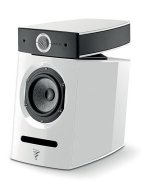 focall.JPG22.1 KB · Views: 154
focall.JPG22.1 KB · Views: 154 -
ND16FA-6_data.zip74.5 KB · Views: 72
-
PS95-8_data.zip83.5 KB · Views: 62
-
TCP115-4_data.zip91 KB · Views: 71
-
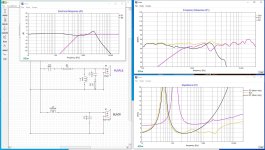 xoverv1.JPG358.5 KB · Views: 158
xoverv1.JPG358.5 KB · Views: 158 -
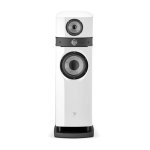 3way.jpg15.3 KB · Views: 154
3way.jpg15.3 KB · Views: 154 -
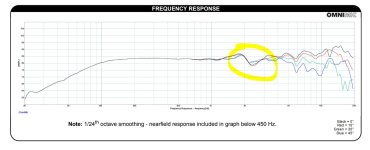 fullrange.JPG95.3 KB · Views: 139
fullrange.JPG95.3 KB · Views: 139 -
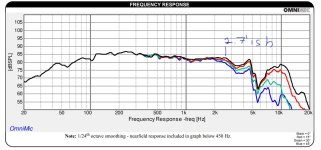 woofer.JPG139.6 KB · Views: 147
woofer.JPG139.6 KB · Views: 147 -
dayton-audio-tcp115-4-spec-sheet.pdf303.7 KB · Views: 70
-
dayton-audio-ps95-8-spec-sheet.pdf244 KB · Views: 77
-
dayton-audio-nd16fa-6-specifications-46192.pdf208.8 KB · Views: 72
For a two way with the TCP115-4 and ND16fa-6, this has been done (Duane Brown's Dayton 4) and is quite good.
https://duanebrowndesigns.blogspot.com/2018/10/getting-your-feet-wet-in-diy-speakers.html?m=1
https://techtalk.parts-express.com/forum/tech-talk-forum/1423033-duane-brown-dayton-4-deluxe-version
https://duanebrowndesigns.blogspot.com/2018/10/getting-your-feet-wet-in-diy-speakers.html?m=1
https://techtalk.parts-express.com/forum/tech-talk-forum/1423033-duane-brown-dayton-4-deluxe-version
No one more ideas? how about my question regarding " Now what would be the thing to do with that dip at 2.4khz, bring the woofer up to compensate? or bring up that 2.4khz on the fullrange within the crossover?."
Going by the dent in the impedance plot, it may be cone break-up, with the coil and cone edge swinging in opposite polarity, so there's probably not a lot you can do about that if that's the source. But I wouldn't worry too much until you get the drivers and measure them. They might not even have the dip.
It might be possible to size the box to get a resonant mode that brings the 1.8kHz area down a bit. Or try something similar with a wave guide.
It might be possible to size the box to get a resonant mode that brings the 1.8kHz area down a bit. Or try something similar with a wave guide.
Honestly, I don't see any point in using a 4" woofer with a 3.5" full range. Let alone in a 3-way.
You're way into the technical weeds! Desktop and Bookshelf speakers are totally different animals. With desktop speakers your listening distance is likely less than 1m - your EAR response at 2.4khz is the least of your worries. Bass is the biggest issue. At such close listening quarters room response is largely irrelevant. More likely the 4" bass driver will expose the system's limitations.
From the Xsim plot of the "Electrical Response", it seems that the present potential filter design has a great deal of overlap between the high and low frequencies. This is quite unusual filtering for a the low-frequency and high-frequency drivers. They will be interacting acoustically over a very broad frequency range, where they are both contributing similar amounts of energy. Is there any particular reason that you may have chosen such an approach?I tried some variations in XSim with the data files provided by Dayton.
@witwald "Now what would be the thing to do with that dip at 2.4khz, bring the woofer up to compensate? or bring up that 2.4khz on the fullrange within the crossover?."
I tought bringing the woofer up , to compensate that dip in the midrange, but I think that would not have been the best ideea,
What freq to cut the woofer to the midrange you recommend? 500-800 ?, 250 to low?.
I tought bringing the woofer up , to compensate that dip in the midrange, but I think that would not have been the best ideea,
What freq to cut the woofer to the midrange you recommend? 500-800 ?, 250 to low?.
Did you see @wolf_teeth 's bottleships?
Might be a good inspiration:
https://www.diyaudio.com/community/...smallest-diy-3-ways-ive-built-or-seen.392609/
Also, sp95 may not even need a tweeter considering your head (and ears) will mostly stay in the same position.
"Next step up" would be adding a pair of tcp's and mounting them in force cancelling configuration ..
By the way, did you consider baffle step?
Might be a good inspiration:
https://www.diyaudio.com/community/...smallest-diy-3-ways-ive-built-or-seen.392609/
Also, sp95 may not even need a tweeter considering your head (and ears) will mostly stay in the same position.
"Next step up" would be adding a pair of tcp's and mounting them in force cancelling configuration ..
By the way, did you consider baffle step?
Last edited:
@stv I'm looking at wolf_teeth's post, interesting.
baffle step as in Using larger baffle ( fron side where the speakers mount ) ? or Baffle Step Correction Circuit ? I've read Rod Elliot's post on baffle step as I wasn;t so familiar with the term.
https://sound-au.com/bafflestep.htm
Personally , according to the data from TCP's, PS's . What crossover freq would you recommend for my drivers?
baffle step as in Using larger baffle ( fron side where the speakers mount ) ? or Baffle Step Correction Circuit ? I've read Rod Elliot's post on baffle step as I wasn;t so familiar with the term.
https://sound-au.com/bafflestep.htm
Personally , according to the data from TCP's, PS's . What crossover freq would you recommend for my drivers?
Baffle step will (partially) compensate the falling response of tcp 115 driver.
Crossover frequency: you might want to keep it as low as possible, out of the "telephone band", maybe 300-400 Hz. If you go lower try to keep the widerange (ps95) in it's xmax range.
Crossover frequency: you might want to keep it as low as possible, out of the "telephone band", maybe 300-400 Hz. If you go lower try to keep the widerange (ps95) in it's xmax range.
@stv If I cross down to 400hz then I won't need to care about 'Baffle step will (partially) compensate the falling response of tcp 115 driver. " right?.
I'll wait for the drivers to arrive and wire them to two amps and try different xover frequencies. ( maybe make the song mono, apply low pass and high pass in Audacity , and L channel to the woofer , right channel to the mid range , just to test out ?. )
I'll wait for the drivers to arrive and wire them to two amps and try different xover frequencies. ( maybe make the song mono, apply low pass and high pass in Audacity , and L channel to the woofer , right channel to the mid range , just to test out ?. )
@stv I don't own a callibrated mic, but my mic I think its good enough for testing, just to make an ideea at least?. Here is a graph, my mic in a box with sound absorbing material, to see if its flat or it " colours the sound", if it wasn't flat I would see dips and peaks even if there was no sound to pick up by the mic?. as it would : "colour " the noise as well?. I might be wrong.
I don;t know how to measue if its pretty flat or a mess, since If i test with speakers their freq response won't be flat either. As i read somewhere , mics usually have a peak at 500hz or so , for it to sound better as humans talk into them.
With Brown, second photo, is the freq response , mic open air, no box.
I don;t know how to measue if its pretty flat or a mess, since If i test with speakers their freq response won't be flat either. As i read somewhere , mics usually have a peak at 500hz or so , for it to sound better as humans talk into them.
With Brown, second photo, is the freq response , mic open air, no box.
Attachments
You mean you measured silence in a box with absorbing material? I cannot imagine that provides something useful 🙂my mic in a box with sound absorbing material,
Anyhow, if the mic is a reasonable quality omni type it will be useful, at keast in the lower range!
Have a look at a baffle step calculator, such as this one (based on excel):then I won't need to care about 'Baffle step
http://audio.claub.net/software/jbabgy/BDBS.html
Or (a complete program):
http://www.tolvan.com/index.php?page=/edge/edge.php
Fill in your planned baffle dimensions, distance from back wall, listening distance and check the results!
If OP hasn't already placed orders... If the largest driver size is 4", I would skip the mid-range, and probably skip the tweeter too. There are full-range drivers where the cone mass vs area is basically equal in performance to a tweeter anyway (approx <0.5g per 5cm², or 2g for 28cm² etc.)
Member
Joined 2009
Paid Member
A 3-way for the desktop is certainly doable but it feels like it would be akin to aiming for a 3 course mean into a sandwhich box for lunch.
Bass is indeed the whole issue and so is near-field listening where traditional multi-way designs are not optimized.
I'd be looking at a small single driver full range speaker (https://www.diyaudio.com/community/threads/martello-enclosure-for-fr88ex.175056/) or a very simple 2-way. Deep bass maybe best done by a sub placed underneath the desk.
Bass is indeed the whole issue and so is near-field listening where traditional multi-way designs are not optimized.
I'd be looking at a small single driver full range speaker (https://www.diyaudio.com/community/threads/martello-enclosure-for-fr88ex.175056/) or a very simple 2-way. Deep bass maybe best done by a sub placed underneath the desk.
- Home
- Loudspeakers
- Multi-Way
- Bookshelf / Desk Speakers

